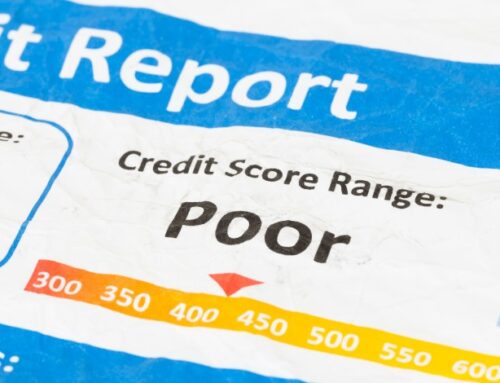Credit cards can be one of the most useful financial tools. If you use it properly, you’ll be able to make purchases while building up your credit score and earning rewards. Unfortunately, the majority of credit cards only offer limited rewards such as cash back or frequent flyer miles. As a result, many Americans turn to multiple credit cards to maximize the benefits. According to Experian, one of the three credit bureaus, the average American holds approximately four credit cards.
The burden of managing multiple credit cards may be difficult for some individuals. Irresponsible use of credit cards can result in a mountain of debt and have lasting effects on your credit score. Discover how you can effectively manage various credit cards by implementing the following strategies.
Understand The Terms, Limits And Features
Each credit card you own will likely have differing terms, limits and features. Understanding each cards’ specific conditions may put you in a better position financially. For example, one credit card may have an annual percentage rate (APR) on purchases, cash advances and balance transfers. Another card may offer a period of 0% APR, and once that period ends, the issuer may have a fixed APR on a remaining balance.
It’s important to know the interest rate on each card, but it may be more important to know which card has the lowest interest rate. By knowing this, you can calculate how much it would cost to carry a balance from month to month, and you can determine which card is the best to keep and balance and which ones should be paid off before the end of the billing cycle.
Not only does understanding the terms help you manage various credit cards, but knowing the limits will help you make sound financial decisions. If you have a good credit history and credit score, issuers may provide you with a substantial limit. Keeping tabs on each cards’ limit will prevent you from overextending beyond your budget and may help you maintain a low credit utilization rate.
Features such as reward programs are one of the reasons people seek out multiple credit cards. Keeping a running list of that information may help you stay organized and on top of your credit card bills. Some of the information you should keep track of includes:
- Interest rates
- Any annual fees and when it has to be paid
- Rewards program details, such as which card offers a specific reward, the minimum spending amount to reach the reward and any ongoing bonuses
- Payment due dates
- The remaining balance (If you plan to carry one or more)
Staying on top of all that information may be challenging. Plenty of personal budgeting platforms are available on the market to help you manage all credit cards in one app.
Strategically Place Purchases On Specific Cards
One of the most important factors to successfully managing multiple credit cards is to select the right card for specific purchases. Ultimately, the list above should help guide your decision for determining which credit card to use for particular purchases.
Rewards may play a big role in determining which card is best for that particular situation. For example, many cash back credit cards will offer 3% back on a specific category. Some of the categories to choose from include:
- Dining
- Travel
- Online shopping
- Gas
- Drug stores
- Home improvement and furnishings
While each cash back credit card may have different rules, it’s possible to see what category you spend the most on and adjust according to that information. Some cash back credit cards allow you to change the category once per calendar month. However, if you’re trying to balance multiple credit cards, sticking with one category for your cash back card and designating that card for those purchases only can help you manage your finances.
Keep Tabs On Important Dates
The tricky aspect of managing various credit cards is staying on top of the important dates. There are three main dates to keep track of, and those include:
- Payment due dates: Without you changing the due dates, the odds that the payment due date for all of your credit cards are on the same day is highly unlikely. Knowing the due date for each one is important because if the company doesn’t receive the payment by that date, you may get hit with extra fees or pay interest.
- Closing date: This date signals the end of the card’s billing cycle. Generally, the statement will close at midnight and close on the same day each month. The day prior is the last day new charges will be added to that statement. If you want to avoid a carry-over balance, the current balance should be paid in full before the closing date.
- Annual fee date: If you have a credit card that requires an annual fee, it’s important to keep track of that date. The annual fee generally occurs the same month you opened the card. For example, if you opened a card that requires an annual fee on July 7, 2021, you can expect to receive the annual fee on the July statement and every July until the card is closed.
In addition to knowing the aforementioned dates, you can do a few things to simplify the payment dates.
- Adjust payment due dates: Generally, credit card issuers will allow you to request a change in your payment due date. If you prefer to pay all bills at once, try contacting your issuer and adjusting the date to one that works best for you.
- Enroll in automatic payments: Once you’ve coordinated all of your credit cards to have the same payment due date, you can set up automatic payments by connecting your bank account to the cards. Automatic payments can help you stay on top of your credit card bills. However, you should ensure you have enough money in your account to cover those bills before the payment goes through.
- Sign up for alerts: Receiving a text or email about important things surrounding your credit cards can be useful when managing multiple accounts.
Consider Credit Score Effects
You may be wondering, does having multiple credit cards hurt your credit score? That depends on how you handle each card. Multiple credit cards can positively or negatively affect your credit score. Even though the two main credit scoring systems (FICO and VantageScore) use their own models to determine a credit score, their most influential factors are similar.
Payment history is one of the most important factors in your credit score calculation. When trying to balance multiple credit cards at once, it’s advantageous to make consistent on-time payments.
Another major factor that influences your credit score is accounts owed and credit utilization rate. Credit utilization rate or ratio refers to how much credit you’re using as opposed to how much is available.
Financial experts suggest that you keep this ratio under 10% to increase your credit score, and if that is not feasible, you don’t want to exceed 30%. If you are looking to be cautious of the utilization rate, you may want to pay as much of the balance as you can before the closing date. That is because many credit card issuers use the closing date to report your information to the three credit bureaus.
Learn More About Credit Cards And Personal Finance
Successfully managing multiple credit cards takes some discipline and having complete knowledge of what is associated with a specific credit card. By implementing some of the strategies discussed in this article, you can be on your way to financial stability.
If you want to expand your credit card portfolio, Arizona Central Credit Union offers low-interest rate credit cards, such as personal credit cards and business credit cards. To learn more about balancing multiple credit credits or if you have general financial inquiries, contact Arizona Central Credit Union today, and one of our financial experts will be happy to help.




